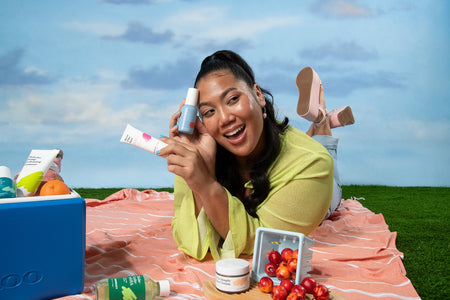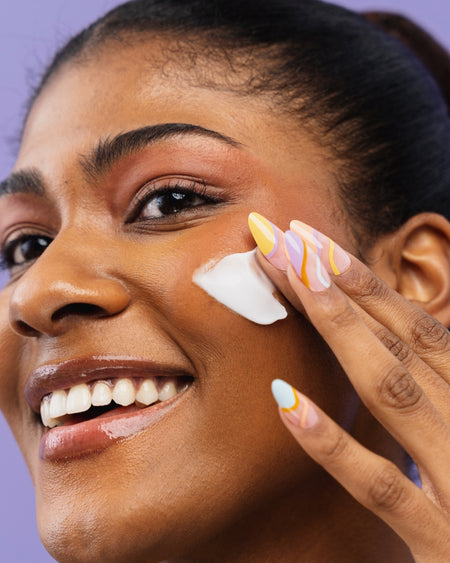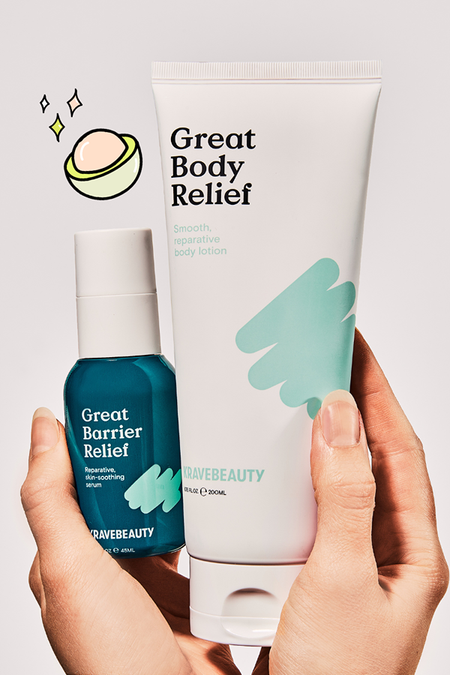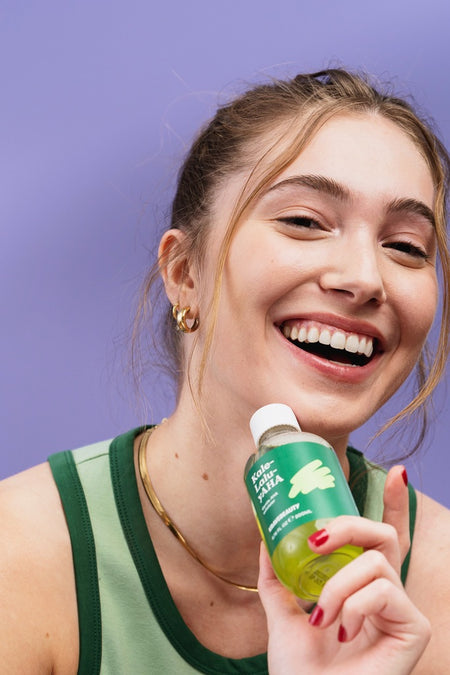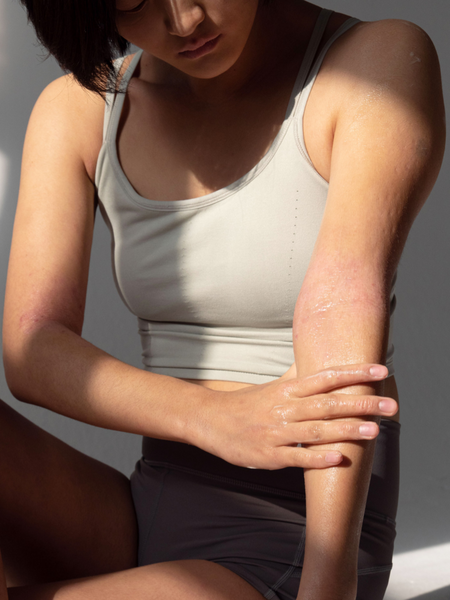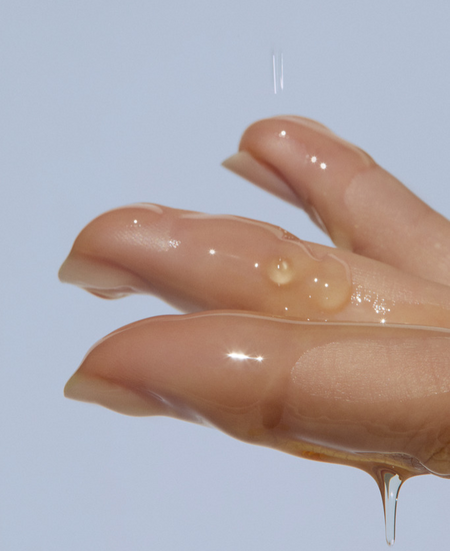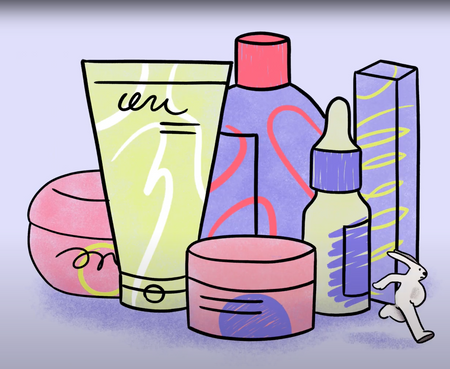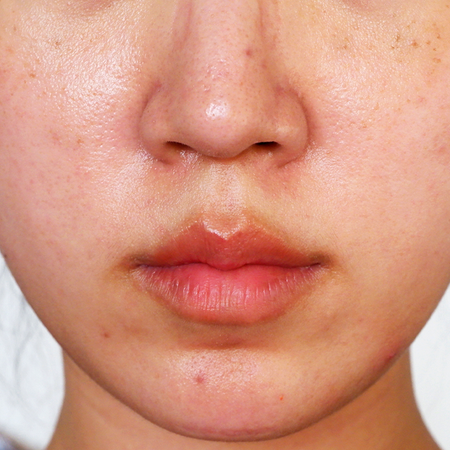Change in Weather = Change in Skincare

Here it is: the annual change in weather = change in skincare blog post you’ve probably seen a million times while roaming the world wide web. And the gist of it always is packing on more moisturizing and hydrating products, but did one ever actually tell you why your skin feels tighter and more uncomfortable in the colder months? We’ve got you covered.
At KraveBeauty, we believe you need to truly understand your skin and its struggles so that you can decide on the best plan of action to help your skin thrive --and we’re here to help. So yes, a change in your skincare routine is one of the many steps you can take to minimize your skin’s discomfort during the colder, drier months, but let’s get to the bottom of why the heck our skin is even acting out.
Dry vs. Dehydrated Skin
To start, let’s clear up what the difference between dry skin vs. dehydrated skin is because they definitely are not one and the same.
Dry skin = your skin is lacking in oil production
Dehydrated skin = your skin is lacking in water content
We know how tough it can be to decipher what the heck your skin is trying to tell you every day, like determining whether your skin is either dry or dehydrated (note: dehydrated skin can still be oily and feel tight, while dry skin may just feel tight). And just when you feel like you’ve got a handle on your skin, the colder seasons decide to throw you off course with a whole new set of challenges, like the drastic changes in indoor-outdoor temperatures and overall lowered humidity levels. But the key to solving a problem is understanding it.
So let's break down what happens to your skin during the colder seasons even more, shall we?
Weather Effect 1: Your oil glands produce less oil, and now your skin is drier and more dehydrated
Regardless of whether you have oily or dry skin, the skin’s oil glands are programmed to produce less oil when they’re exposed to colder temperatures. And when our skin produces less oil, which acts as its natural moisturizer, water escapes more easily from our skin and leads to further dehydration and dryness.
Weather Effect 2: Lower humidity levels and intense indoor heaters are NOT our friends.
We all love that feeling of walking into a toasty, heated room after being out in the cold, but this is an absolute nightmare for our skin’s hydration levels. Indoor heaters pretty much zap any moisture in the air and the lower humidity levels also allow water to escape from our skin (aka increased TEWL) and further dehydrate our skin.

(Image source: https://www.blisterprevention.com.au/blister-blog/the-problem-with-lubricants)
Weather Effect 3: Skin Dehydration -> More Oil Production -> Less Water Retention
And so begins the vicious cycle— (1) the cold weather conditions make your skin dehydrated (2) if left untreated (unmoisturized) your oil glands produce more oil, (3) more oil production means your skin is less focused on retaining its water content, and (4) repeat throughout the entire, frigid season. This cycle leaves our skin looking more cracked and feeling tighter, which is definitely NOT the look and feel we’re going for.
So now that we know what our skin is going through, the next big question is what do we do to prevent this from happening?
5 Tips to Prevent Dry and Dehydrated Skin
-
Keep your skin hydrated and moisturized
The obvious one, but: The key here is to not only hydrate your skin, but to also seal that hydration in. It’s inevitable that the drier seasons will cause more water to escape from your skin, but you can help your dehydrated skin out by applying hydrating products with a potent occlusive that make it more difficult for the water to escape in the first place.
-
Face oils
Face oils can be your ultimate savior during these trying times. To compensate for your skin’s lowered amount of oil production, an oil based skincare product can help to add and seal hydration in your skin and further prevent the vicious cycle of dryness and dehydration.
-
Use a humidifier
Higher humidity level = less water escaping from our skin. Using an indoor humidifier increases the moisture level in your room, which helps your skin retain its hydration and any extra you’ve been feeding it through your skincare products.
-
Avoid long hot showers
This one’s a tough one, because who doesn’t like a hot steamy shower after a long day? However, putting your skin through a consistently high temperature like that will suck out your skin’s internal moisture and you may walk out of that shower feeling ironically more parched.
-
Last but not least, apply sunscreen!!!
We’re sorry to mom you here, but sunscreen is just THAT important. No matter what the season is, what it looks like outside, you should apply sunscreen EVERY. SINGLE. DAY. We’ve said it before and we’ll say it again, but sun damage due to UV ray exposure is the number one cause of accelerated aging and UV rays strike through windows, clouds, etc. Just because the sun does not feel as hot in the colder months doesn’t mean it’s not there and doing the same thing to the same effect!
Let us know what your tips and tricks are to keep your skin feeling hydrated and moisturized during the colder months!
 Matcha Hemp Hydrating Cleanser
Matcha Hemp Hydrating Cleanser Oat So Simple Water Cream
Oat So Simple Water Cream Beet The Sun SPF 40 PA+++
Beet The Sun SPF 40 PA+++ Great Barrier Relief
Great Barrier Relief Kale-Lalu-yAHA
Kale-Lalu-yAHA

